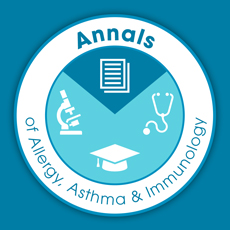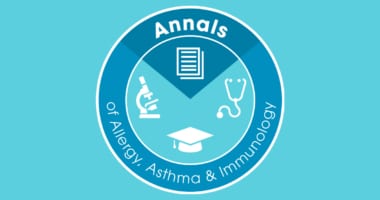 As 2017 draws to a close, I want to thank all of the people who make the Annals of Allergy, Asthma and Immunology a successful journal. Our editors, editorial staff and publisher all play integral roles for our journal. But it is you, our readers, that make the efforts to provide a scientific journal for the practicing clinician worthwhile. With these thoughts in mind, I would like to call your attention to two more articles in our Dec. issue that may be useful for you in your practice – both now and in the future.
As 2017 draws to a close, I want to thank all of the people who make the Annals of Allergy, Asthma and Immunology a successful journal. Our editors, editorial staff and publisher all play integral roles for our journal. But it is you, our readers, that make the efforts to provide a scientific journal for the practicing clinician worthwhile. With these thoughts in mind, I would like to call your attention to two more articles in our Dec. issue that may be useful for you in your practice – both now and in the future.
The first is an ACAAI position statement on the use of telemedicine in the practice of allergy-immunology written by the ACAAI task force on telemedicine in allergy. The writers define telemedicine, including the technical differences included under this rubric and the potential benefits to patients and providers. It also dives into challenges for allergy specialists to successfully practice telemedicine. This includes learning to see patients electronically, technical considerations and licensing concerns which vary between states. The task force discusses other aspects of this practice and ends with a well-articulated summary containing 14 position statements regarding the use of telemedicine by allergists-immunologists. This is a must read for all of us whether or not we are considering telemedicine in our practices as it will no doubt affect how allergy/immunology, as well as other types of medicine, is practiced in the future.
Another paper that should be read by all is the new practice guideline on allergic rhinitis from the ACAAI-AAAAI Joint Task Force on Practice Parameters. Accompanied by an editorial penned by Drs. Lang and Portnoy, the guideline accomplishes two things:
- Updated information focused on treatment decisions for patients with allergic rhinitis
- The introduction of a new guideline format that is more focused toward evidence-based treatment recommendations.
Previous practice parameters were more likely to include the disease spectrum from diagnosis to treatment. The new guideline format will focus on a few important questions for each topic with the intent of providing answers from a rigorous systematic review of the literature. The intent is to be more useful to the practicing clinician.
I hope you enjoy these and other articles from our Dec. issue and take a look at the new Annals features in our Jan. issue, online now. On behalf of the entire Annals team, we wish you a Happy New Year.
Gailen D. Marshall, Jr., MD PhD, FACAAI
Editor-in-chief

